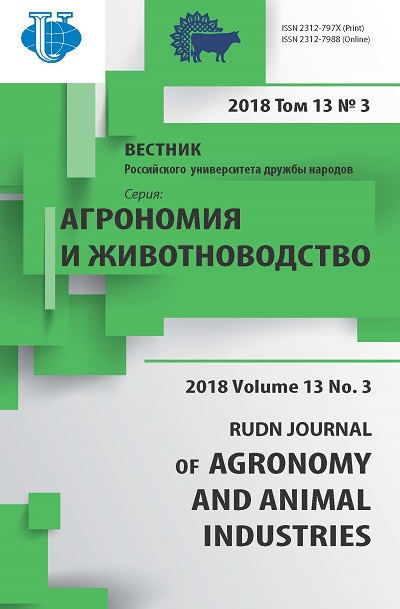EFFICIENCY ESTIMATION OF STRIPTILL SOIL PROCESSING TECNOLOGY
- Authors: Borisenko I.B.1,2, Chamurliev O.G.1, Chamurliev G.O.3, Meznikova M.V.1
-
Affiliations:
- Volgograd State Agricultural University
- Caspian Research Institute of Arid Agriculture
- Scientific Research Institute of Design Vid Project
- Issue: Vol 13, No 3 (2018)
- Pages: 194-206
- Section: Agricultural technologies and land reclamation
- URL: https://agrojournal.rudn.ru/agronomy/article/view/19318
- DOI: https://doi.org/10.22363/2312-797X-2018-13-3-194-206
- ID: 19318
Cite item
Full Text
Abstract
About the authors
Ivan Borisovich Borisenko
Volgograd State Agricultural University; Caspian Research Institute of Arid Agriculture
Author for correspondence.
Email: borisenivan@yandex.ru
Doctor of Engineering Science, senior researcher, professor of Volgograd State Agricultural University Universitetskiy pr., 26, Volgograd, 400002, Russian Federation
Omariy Georgievich Chamurliev
Volgograd State Agricultural University
Email: attika.ge@yandex.ru
Doctor of Agricultural Science, Volgograd State Agricultural University Universitetskiy pr., 26, Volgograd, 400002, Russian Federation; Severny district, v. Solenoe Zaimische, Chernoyarsky district, Astrakhan region, 416251, Russian Federation
Georgiy Omarievich Chamurliev
Scientific Research Institute of Design Vid Project
Email: giorgostsamourlidis@mail.ru
Candidate of Agricultural Science, Scientific Research Institute of Design «Vid Project» Olimpiyskay str., 1/2, Vidnoe, 142701, Russian Federation
Maria Viktorovna Meznikova
Volgograd State Agricultural University
Email: marina_roxette@mail.ru
Senior Lecturer of Volgograd State Agricultural University Universitetskiy pr., 26, Volgograd, 400002, Russian Federation
References
- Shabaev AI. Adaptivno-ekologicheskie sel'skokhozyaistvennye sistemy v agrolandshaftakh Povolzh'ya [Adaptive-ecological farming systems in agrolandscapes of Volga Region]. Saratov; 2003. 344 p. (In Russ).
- Patent RUS № 1544634/27.08.15. Byul. № 24. Borisenko IB, Borisenko PI, Pleskachev YN, et al. Plug-rykhlitel' [Ripper plow]. (In Russ).
- Patent RUS № 2544950/20.03.15. Byul. № 8. Borisenko IB, Pleskachev YN, Sokolova MV. Orudie dlya reguliruemoi polosnoi glubokoi obrabotki pochvy [Instrument for controlled strip deep cultivation]. (In Russ).
- GOST (Russian State Standard) R 52778 - 2007 Testirovanie sel'skokho-zyaistvennoi tekhniki. Metody operativnoi i tekhnologicheskoi otsenki [Testing of agricultural machinery. Methods of operational and technological evaluation]. Moscow: Standartinform Publ.; 2008. (In Russ).
- Kurmanbaev SK, Dzhamanova GI. Ekologicheskie osnovy organizatsii zashchity rastenii: uchebnik dlya magistrov sel'skokhozyaistvennykh vuzov [Ecological foundations of plant protection: a textbook for undergraduates of agricultural universities]. Semei Publ.; 2016. 205 p. (In Russ).
- Ovchinnikov AS, Pleskachev YN., Borisenko IB, Tseplyaev AN. Registr tekhnologii proizvodstva zernovykh, zernobobovykh, krupyanykh i maslichnykh kul'tur v Volgogradskoi oblasti [Register of technologies for production of ce-reals, legumes and oilseeds in Volgograd region]. Volgograd: Volgogradskii GAU Publ.; 2012. 148 p. (In Russ).
Supplementary files















